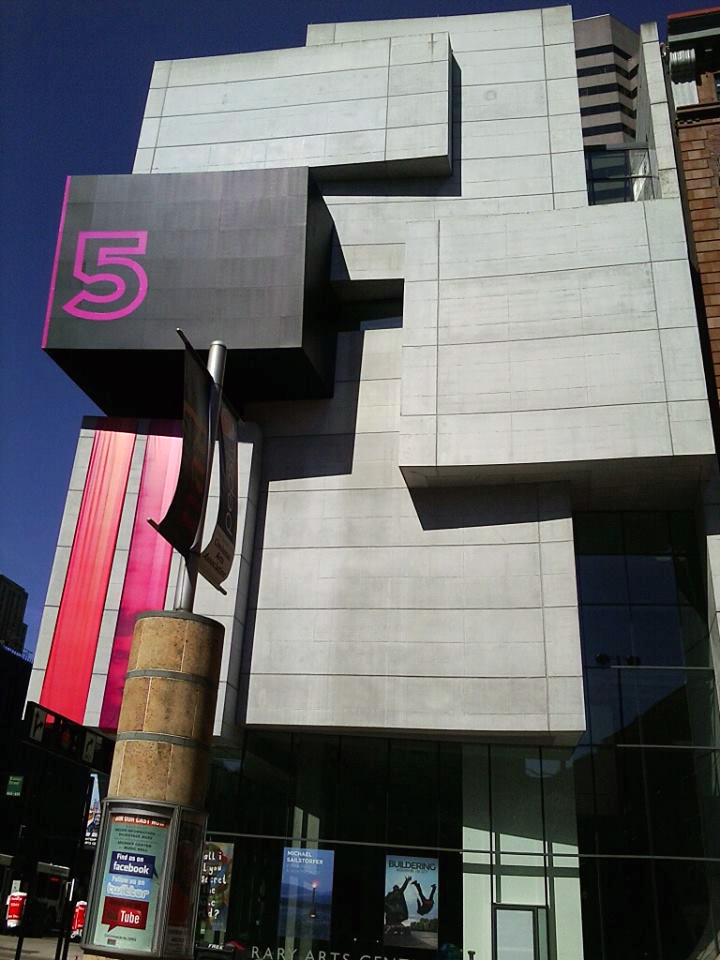Ronnie Self
Routledge, 2014

In his book, The Architecture of Art Museums: A Decade of Design, 2000–2010, architect Ronnie Self (an alumnus of Renzo Piano Building Workshop and professor of architecture at the University of Houston) looks at eighteen ambitious art museum projects from the first decade of the twenty-first century (twelve in the United States and six in Europe) from top international architects in the United States, Europe, and Japan. The case studies on American museums are derived from his work as a critic for the French journal Archicréé from 2000 to 2010, while the European case studies appear here for the first time.
This brief introduction (four pages) is followed by the meat of the book, the eighteen case studies (287 pages, followed by a useful select bibliography of three pages and an index). The case studies are positively invaluable, as they each contain plans, sections, site plans, photographs, and construction details obtained from the architects, many previously unpublished, along with Self’s clear and concise architectural analysis. The writing is particularly revealing on matters of design process, structure, lighting, and materiality. As with any such work, the most difficult task facing the author was doubtless the selection of case studies, as for any project included, there must be many excluded. Self tends to favor projects with iconic intentions and ambitious, transformational urbanistic aspirations. The museums considered are the Modern Art Museum of Fort Worth (Fort Worth, TX; Tadao Ando & Associates), theContemporary Art Center (Cincinnati, OH; Zaha Hadid, Architects), the Kunsthaus Graz (Graz, Austria; Spacelab Cook/Fournier), theNasher Sculpture Center (Dallas, TX; Renzo Piano Building Workshop), the Museum of Modern Art expansion (New York, NY; Yoshio Taniguchi and Associates), the Walker Art Center expansion (Minneapolis, MN; Herzog & de Muron), the Museo Nacional Centro de Arte Reina Sofia expansion (Madrid, Spain; Ateliers Jean Nouvel), the de Young Museum (San Francisco, CA; Herzog & de Muron), the Toledo Museum of Art Glass Pavilion (Toledo, OH; Kazuyo Sejima + Ryue Nishizawa/SANAA), the Denver Art Museum(Denver, CO; Studio Daniel Liebeskind), the Institute of Contemporary Art/Boston (Boston, MA; Diller, Scofidio + Renfro), theNelson-Atkins Museum of Art Bloch Building (Kansas City, MO; Steven Holl Architects), the Akron Art Museum (Akron, OH; Coop Himmelb(l)au), the New Museum (New York, NY; Kazuyo Sejima + Ryue Nishizawa/SANAA), the Acropolis Museum (Athens, Greece; Bernard Tschumi Architects), the Museum Brandhorst (Munich, Germany; Sauerbruch Hutton), and the Museo Nazionale delle Arti dell XXI Secolo (Rome, Italy; Zaha Hadid Architects).
This list of case studies includes virtually all of the major players in contemporary art museum design, though Renzo Piano, the leading art museum architect of the period, is only represented by the Nasher Sculpture Center, which, though incorporating his trademark glass roof and natural lighting, is not the most representative of his work due to the institution’s sole focus on sculpture. Important projects conspicuous in their absence are the DIA: Beacon Riggio Galleries (Beacon, NY; the installation artist Robert Irwin, in association with OpenOffice), the Musée de Quai Branly (Paris, France; Jean Nouvel), and the Smithsonian American Art Museum/National Portrait Gallery expansion (Washington, DC; Foster + Partners). This said, these exclusions are largely explained by Self’s interest in what he terms “the Bilbao effect” or “the Sydney effect”: the quest of clients and architects to use these buildings to create destinations that will also become transformative symbols of their cities. Further, the other pole of contemporary art museum design (that of the understated, spiritual envelope for collections) has been virtually monopolized over the past thirty years by the practice of Renzo Piano Building Workshop.
Perhaps a little more time could also have been spent on the museological implications of radical architecture (Self acknowledges that many of the projects present challenges to curators; should they? The preference of many of the great collections for “white cube” galleries and warehouse-type exhibition spaces endures for a reason), but The Architecture of Art Museumspresents a terrific summation of the building type over the first decade of the twenty-first century and is the definitive reference work on the subject. It belongs on the shelf of any architect engaged in museum design.
How to Cite this Article: Wolf, Eric Michael. Review of The Architecture of Art Museums: A Decade of Design, 2000-2010, by Ronnie Self, JAE Online, July 4, 2014, https://jaeonline.org/issue-article/architecture-art-museums/.






